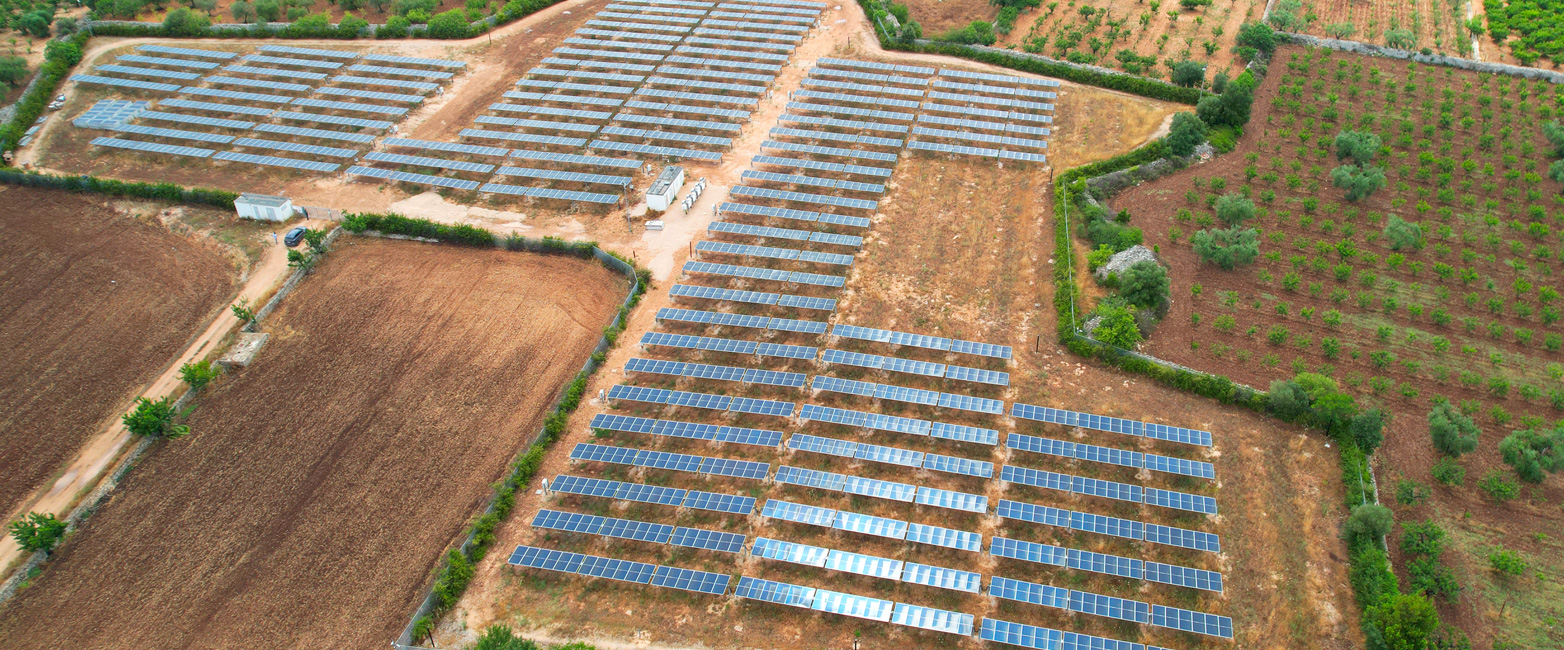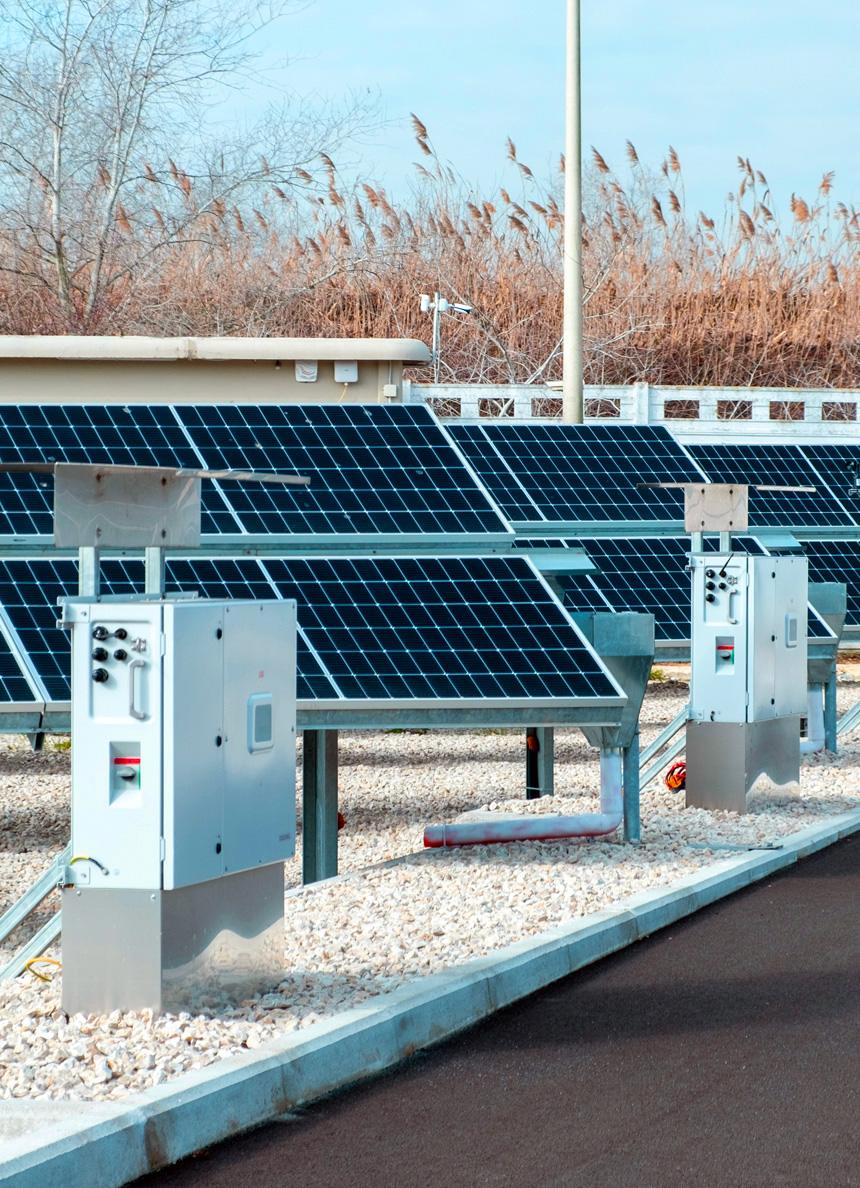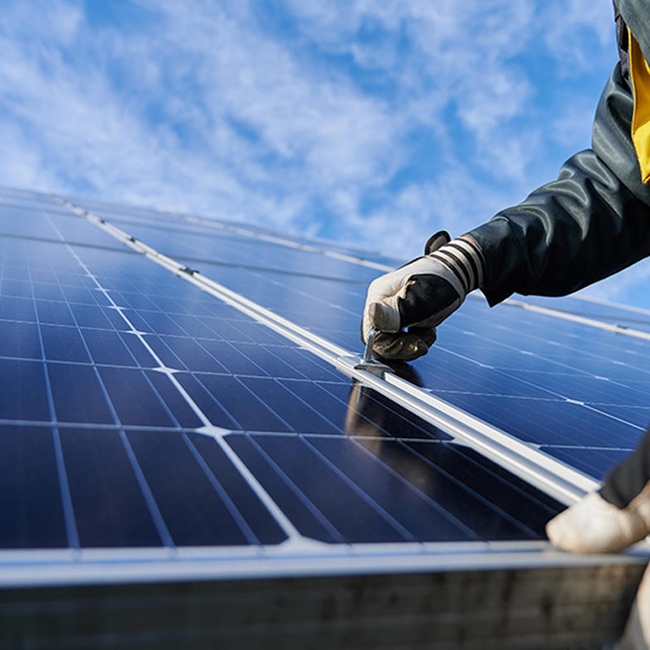
All ([result_num])

New website: how navigation changes
A guide to our new digital ecosystem to help you discover our companies, services and contacts.
Trending topics
We generate electricity from renewable sources, particularly photovoltaic systems, to support decarbonisation and the energy transition.


Photovoltaics plays an increasingly central role in our sustainable development strategies. We have embarked on a growth path in solar energy production, investing in the construction of new photovoltaic plants.
In 2024, our installed capacity reached approximately 170 MW (with 153.6 MW already operational by the end of the year). Our photovoltaic plants are mainly located in central and southern Italy.
At the end of 2024, we completed revamping works (37 MW) across 36 plants in 4 regions. The decision to modernise plants that have been in operation for over ten years stems from the need to address natural performance degradation and the technological obsolescence of components. These efficiency measures not only increase energy production but also contribute to the energy transition and the reduction of CO₂ emissions, in line with the goals of our Business Plan.
1.
Increasing energy production
2.
Extending the plant's lifespan
3.
Improving overall plant efficiency
4.
Optimising the occupied area
The entire revamping project took approximately one year to complete, with efforts focused on minimising downtime and avoiding peak production months to reduce business interruptions as much as possible.

The photovoltaic plants we operate, primarily built on land, convert solar energy into electricity, which we feed into the grid to support the energy transition. The photovoltaic plants we manage are mainly located in central and southern Italy.
total installed capacity
of energy produced
Data as of 31 December 2024
The photovoltaic systems we operate utilize the best technologies available on the market to maximise efficiency in solar energy production.
The main components adopted include:
Bifacial modules
These modules can capture not only direct sunlight on the front surface but also reflected light on the rear side. This leads to higher energy output compared to monofacial modules.
Single-axis tracker structures
These are motorised systems that allow panels to follow the sun's path throughout the day. Compared to fixed structures, trackers optimise the tilt of the modules, thereby increasing the overall energy yield of the system.
String inverters
These devices offer greater control and improved fault management, making it easier to isolate energy losses. Unlike centralised inverters, they allow faster problem localisation and provide greater flexibility in both installation and maintenance.

A photovoltaic plant is a system that generates electricity by harnessing solar energy through a process known as the photovoltaic effect. At the core of this process are photovoltaic modules composed of cells made from semiconductor materials such as silicon. When sunlight hits these cells, photons transfer their energy to electrons in the silicon, generating a direct current (DC).
However, direct current is incompatible with domestic or industrial power grids, which operate on alternating current (AC). Therefore, the electricity produced is sent to an inverter, which converts the direct current into alternating current, making it suitable for powering electrical devices or feeding electricity into the national grid.